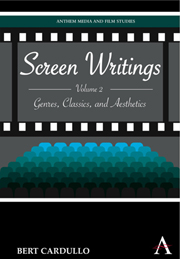Book contents
- Frontmatter
- Contents
- List of Illustrations
- Introduction: The Film of Value
- Part I Film Genres, Film Classics, and Film Aesthetics
- Interlude
- Part II Classification, Re-classification, and Assessment
- 8 Early vs. Later Bergman: Winter Light and Autumn Sonata Revisited
- 9 “Everyone Has His Reasons”: Words, Images, and La grande illusion in the Cinema of Jean Renoir
- 10 A Passage to Tokyo: The Art of Ozu, Remembered
- 11 Through the Looking Glass: The American Art Cinema in an Age of Social Change
- Bibliography of Related Criticism
- Index
- Plate section
10 - A Passage to Tokyo: The Art of Ozu, Remembered
from Part II - Classification, Re-classification, and Assessment
Published online by Cambridge University Press: 05 March 2012
- Frontmatter
- Contents
- List of Illustrations
- Introduction: The Film of Value
- Part I Film Genres, Film Classics, and Film Aesthetics
- Interlude
- Part II Classification, Re-classification, and Assessment
- 8 Early vs. Later Bergman: Winter Light and Autumn Sonata Revisited
- 9 “Everyone Has His Reasons”: Words, Images, and La grande illusion in the Cinema of Jean Renoir
- 10 A Passage to Tokyo: The Art of Ozu, Remembered
- 11 Through the Looking Glass: The American Art Cinema in an Age of Social Change
- Bibliography of Related Criticism
- Index
- Plate section
Summary
The worldly life of Yasujiro Ozu (1903–1963) was, like that of many another artist, very worldly. This is especially true of film artists, for no one can live in a movie environment as in a Buddhist monastery. And no film director is likely to get the chance to achieve such “purity” as Ozu's (more on this term later) unless he can deal with the rather less pure circumstances that surround the making of all films.
Ozu entered films as an assistant in 1923, when he was twenty years old, assigned to a director of light comedy. He had been born in Tokyo but moved away with his mother while quite young. His father had remained in Tokyo to manage the family business, so Ozu grew up virtually fatherless – an interesting fact in light of the centrality of father figures in his later films. Sent to a boarding school, he did badly and was expelled. When he was in a prefectural (or public) middle school, he was dispatched to the city of Kobo to apply to a good high school. Instead Ozu went to a movie. He soon saw other films, by Thomas Ince and Rex Ingram, and later he said that, if he had not seen them, he might never have chosen the film profession.
But he did choose it, and, with the help of a friend of his father's, he got his first job. Ozu remained an assistant for four years.
- Type
- Chapter
- Information
- Screen WritingsGenres, Classics, and Aesthetics, pp. 149 - 160Publisher: Anthem PressPrint publication year: 2010



